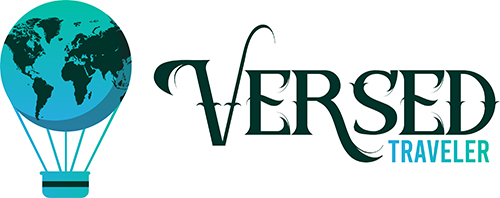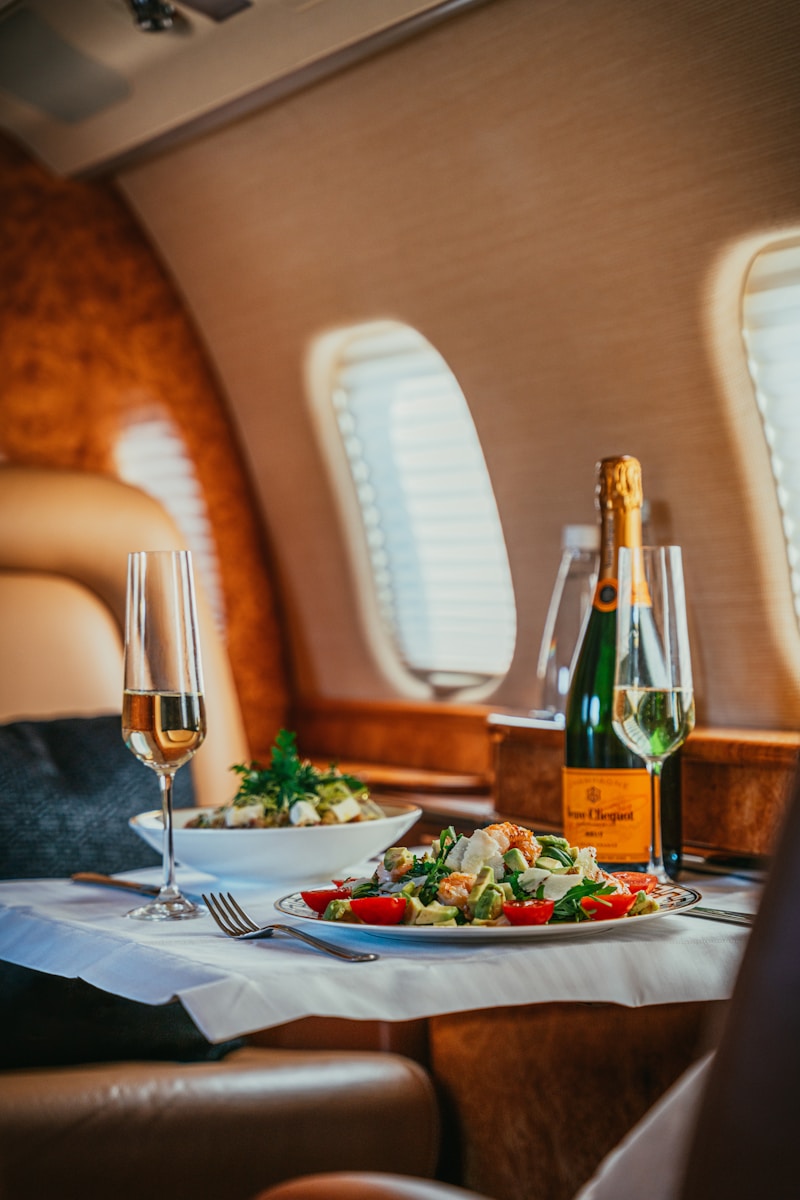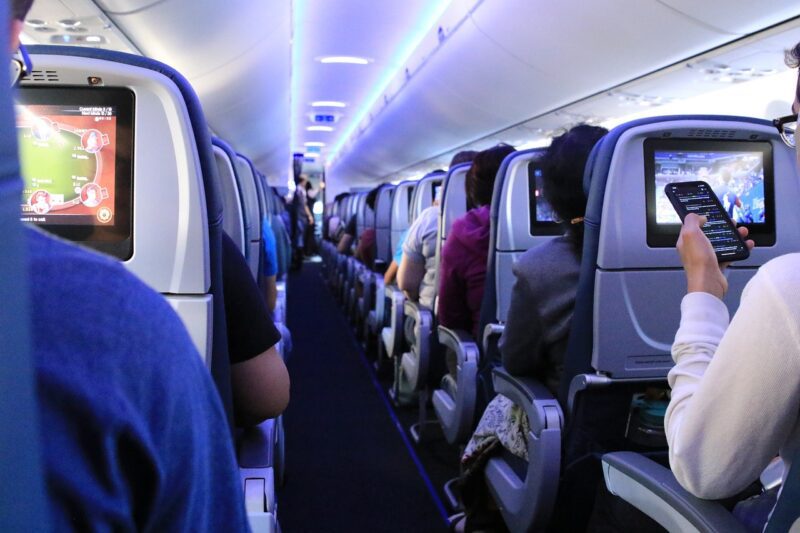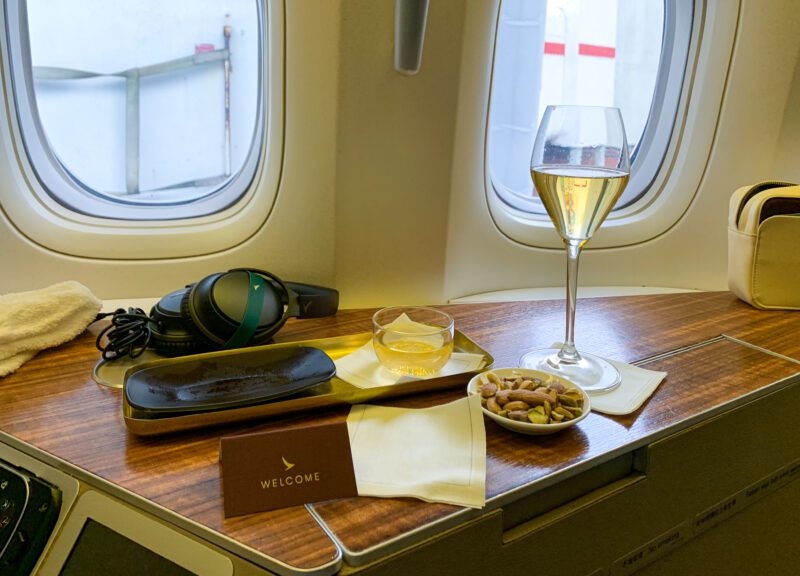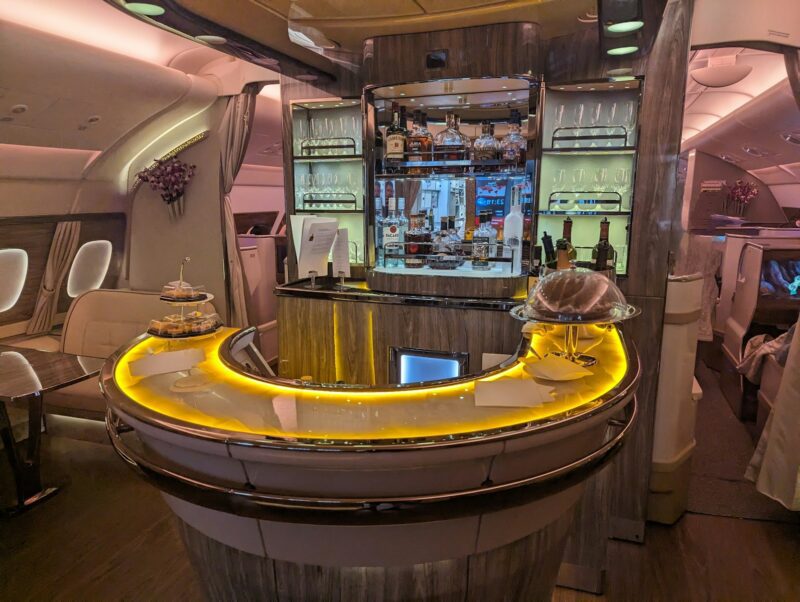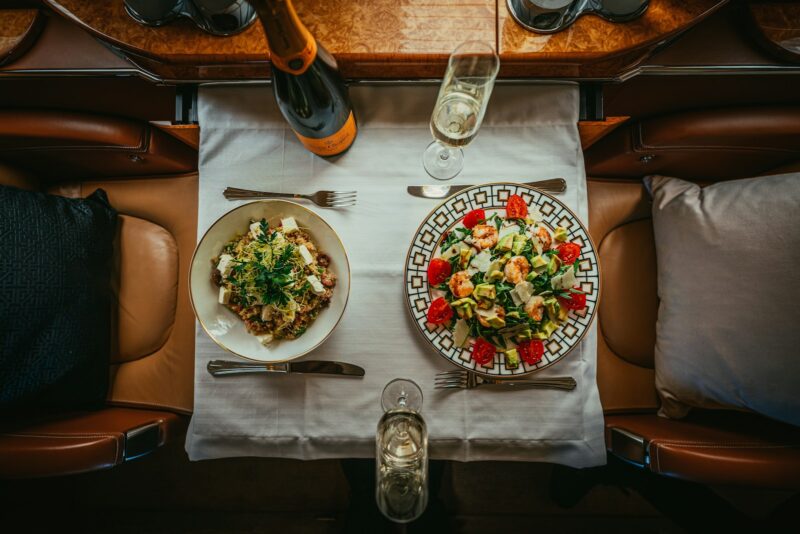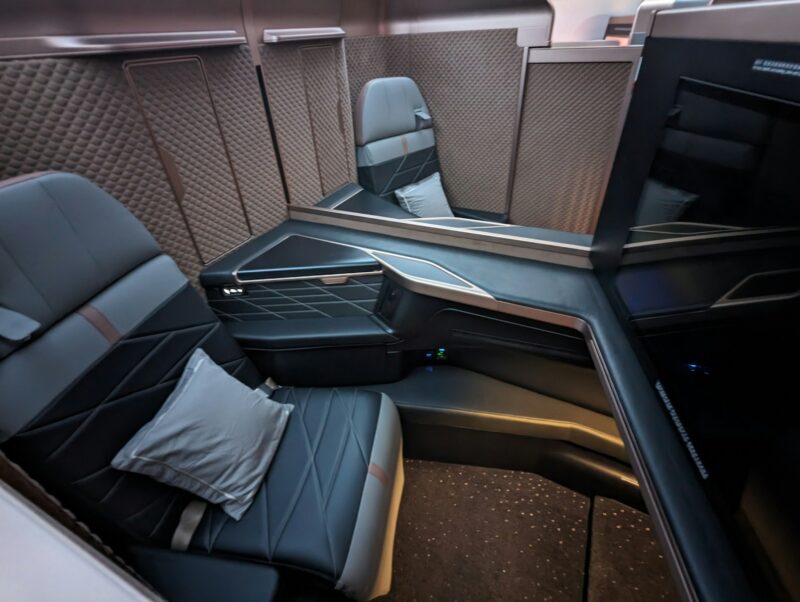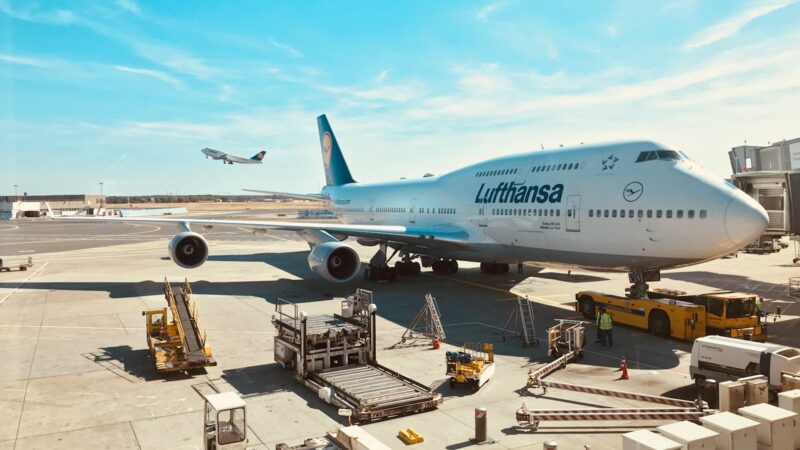Ever wondered why the person next to you on a flight paid a different price for their ticket? The answer lies in airline fare classes. These classes determine ticket prices and rules for each seat on a plane.
Airline fare classes are letter codes that show what type of ticket you’ve bought and what perks come with it. For example, Y usually means full-fare economy, while W often stands for premium economy. These codes affect things like how many miles you earn, if you can change your ticket, and your spot on the upgrade list.
Knowing about fare classes can help you get more value from your air travel. You might find that paying a bit more for a higher fare class gives you perks that make your trip easier. Or you could save money by picking a lower fare class if you don’t need extras. Either way, learning the basics of fare classes helps you make smarter choices when you book flights.
Table of Contents
ToggleEconomy Class
Economy class is the most common and affordable option for air travel. It offers basic amenities and services at a lower price point. Let’s explore what you can expect when flying in economy.
Overview Of Economy Class
Economy class, also known as coach or main cabin, is the standard seating option on most flights. It’s designed for budget-conscious travelers who want to reach their destination without extra frills.
You’ll find several fare types within economy:
- Full-fare economy (Y): The most flexible and expensive economy ticket
- Discounted economy: Various lower-priced options with some restrictions
- Basic economy: The most restricted and cheapest fare
Your seat will typically be in a 3-3 or 3-4-3 configuration, depending on the aircraft. Legroom is limited, with about 30-32 inches of pitch on average.
Services And Amenities
In economy class, you’ll get the essentials for your flight. Here’s what you can usually expect:
- A seat with a tray table and overhead bin access
- In-flight entertainment (on some airlines or longer flights)
- Meals on long-haul flights (sometimes for an extra fee on shorter flights)
- Non-alcoholic beverages
- One carry-on bag and one personal item
Your baggage allowance may vary. Many airlines now charge for checked bags on domestic flights. Some offer free seat selection, while others charge a fee.
Pros And Cons
Economy class has its upsides and downsides. Here are the main points to consider:
Pros:
- Most affordable option
- Available on nearly all flights
- Chance to earn frequent flyer miles
Cons:
- Limited legroom and seat width
- Basic amenities
- Possible fees for extras like seat selection or baggage
You might find economy uncomfortable on long flights. But for shorter trips or when budget is a priority, it’s a practical choice. Remember, comfort levels can vary between airlines, so it’s worth comparing options.
Premium Economy Class
Premium economy offers a step up from regular economy without the high cost of business class. It gives you more comfort and perks at a middle-ground price point.
Overview Of Premium Economy Class
Premium economy is a cabin class between economy and business class. It’s often marked by fare codes W or P. You’ll find wider seats with more legroom and recline than regular economy. The cabin is usually separate from economy, with fewer seats per row.
Airlines started offering premium economy to bridge the gap between cramped economy and pricey business class. It aims to give budget-conscious travelers a taste of luxury without breaking the bank. Many major airlines now offer this option on long-haul flights.
Premium economy tickets cost more than regular economy but less than business class. Prices can vary widely depending on the route and airline.
Services And Amenities
In premium economy, you’ll enjoy:
- More legroom (usually 5-7 inches extra)
- Wider seats with greater recline
- Better quality meals served on real dishes
- Larger personal screens for in-flight entertainment
- Priority boarding
- Extra baggage allowance
Some airlines offer amenity kits with items like eye masks and socks. You might also get noise-canceling headphones and a dedicated cabin crew.
The exact perks vary by airline. It’s worth checking what’s included before you book. Some airlines offer a more luxurious experience than others.
Pros And Cons
Premium economy has its upsides and downsides. Here are the main points to consider:
Pros:
- More comfortable than economy, especially on long flights
- Better sleep quality due to increased recline and legroom
- Improved dining experience
- Quieter cabin with fewer passengers
Cons:
- Significantly more expensive than regular economy
- Not as luxurious as business or first class
- Limited availability on some routes
- Perks can vary widely between airlines
Premium economy can be a good choice for long flights when you want extra comfort but can’t justify business class prices. It’s also great for tall travelers who need more legroom.
But remember, it’s still closer to economy than business class. If you’re expecting lie-flat beds or gourmet meals, you might be disappointed.
Business Class
Business class offers a premium travel experience with extra comfort and perks. It’s a step up from economy but not quite as luxurious as first class. Let’s explore what business class entails and why it might be worth the splurge.
Overview Of Business Class
Business class is typically coded as J or C on airline tickets. It’s designed for travelers who want more space and better service. You’ll find wider seats that often convert into lie-flat beds on long-haul flights.
The cabin layout gives you more privacy and room to work or relax. You’ll also get priority check-in, security, and boarding. This means less time waiting in lines and more time to prepare for your trip.
Business class tickets are pricier than economy but can be a good value for long flights. Some airlines offer deals or use points to make it more affordable.
Services And Amenities
In business class, you’ll enjoy enhanced services and amenities. Here’s what you can expect:
- Gourmet meals with multiple courses
- Premium drinks, including champagne
- Larger personal entertainment screens
- Noise-canceling headphones
- Amenity kits with toiletries and comfort items
- Extra baggage allowance
Lounge access is a key perk. You can relax, work, or freshen up before your flight. Lounges often offer food, drinks, showers, and quiet areas to rest.
Pros And Cons
Business class has many benefits, but it’s important to weigh them against the cost. Here are some pros and cons to consider:
Pros:
- More comfortable seating and better sleep on long flights
- Quieter cabin environment
- Higher quality food and drink options
- Increased productivity with more space to work
- Arrive feeling more refreshed
Cons:
- Much more expensive than economy tickets
- May not be worth it for short flights
- Can lead to high expectations for future travel
- Loyalty programs may be harder to earn status with fewer flights
First Class
First class offers the pinnacle of luxury air travel. You’ll enjoy exclusive services, spacious seating, and gourmet dining. Let’s explore what makes first class so special.
Read my review of a first-class Cathay Pacific flight here!
Overview Of First Class
First class is the most premium cabin on an aircraft. You’ll find it on long-haul international flights and some domestic routes. First class tickets are usually labeled with the code “F” or “A”.
Airlines often give first class unique names. For example, American Airlines calls it “Flagship First”. These seats offer maximum privacy and comfort. You’ll have a lie-flat bed, personal storage, and direct aisle access.
First class cabins are small, with only a handful of seats. This ensures you get personalized attention from the crew.
Services And Amenities
In first class, you’re treated like royalty from the moment you arrive at the airport. Here’s what you can expect:
- Priority check-in and security
- Exclusive lounge access
- Onboard welcome champagne
- Multi-course gourmet meals
- Top-shelf wines and spirits
- Luxury amenity kits
- Pajamas on long-haul flights
- Large entertainment screens
Some airlines even offer chauffeur service to and from the airport. You’ll also have extra baggage allowance and priority boarding.
Pros And Cons
Pros:
- Ultimate comfort and space
- Excellent sleep quality on long flights
- Gourmet dining experience
- Personalized service
- Time-saving perks at the airport
Cons:
- Very expensive, often 5-10 times more than economy
- Limited availability on routes and aircraft
- May feel unnecessary for shorter flights
- Can be hard to justify for budget-conscious travelers
First class is ideal if you value luxury and comfort above all else. It’s perfect for special occasions or when you need to arrive well-rested. But it comes at a steep price that not everyone can afford.
Comparing Airline Fare Classes
When you book a flight, you’ll encounter different fare classes. These affect your travel experience in various ways. Let’s explore the key differences between fare classes to help you make an informed choice.
Comfort And Space
Your seat comfort and space vary greatly between fare classes. In economy, you’ll find standard seats with limited legroom. Premium economy offers wider seats and extra inches for your legs. Business class provides even more room, often with seats that recline into flat beds. First class takes luxury to another level, with spacious suites on some airlines.
Seat pitch (the distance between seats) increases as you move up in fare class. Economy might give you 30-32 inches, while premium economy offers 34-38 inches. Business and first class can provide 60 inches or more.
Some airlines use different names for their fare classes. Always check the specific features included in your ticket.
In-Flight Services
The level of service you receive depends on your fare class. In economy, you’ll typically get basic services. Meals and drinks might be complimentary on long flights, but you may need to pay for them on shorter routes.
Premium economy often includes better meal options and free alcoholic beverages. Business class steps it up with high-quality dining, premium drinks, and attentive service. First-class passengers enjoy gourmet meals, top-shelf drinks, and personal attention from flight attendants.
Entertainment options also improve in higher classes. While economy usually has shared screens or basic seat-back systems, premium classes often feature larger personal screens with more content.
Additional Perks
Your fare class determines extra benefits beyond your in-flight experience. Economy tickets usually offer the basics, while higher classes come with more perks.
Premium economy might include:
- Priority check-in
- Extra baggage allowance
- Faster boarding
Business and first-class add:
- Lounge access
- Fast-track security
- Chauffeur services (on some airlines)
These perks can make your journey smoother and more enjoyable. They’re especially valuable for frequent flyers or on long trips.
Cost Vs. Value
The price difference between fare classes can be significant. Economy is usually the cheapest option, while first class can cost several times more. You need to weigh the cost against the value you’ll receive.
Consider factors like:
- Flight duration
- Your budget
- Comfort needs
- Desire for luxury
For short flights, economy might be perfectly fine. On long-haul trips, the extra comfort of premium classes could be worth the cost. Business travelers might find higher classes valuable for working or arriving rested.
Remember, fare codes like Y, W, J, and F represent different classes. These codes affect ticket prices and benefits. Always check what’s included in your specific fare before booking.
Tips For Choosing The Right Airline Fare Classes
Picking the right fare class can make a big difference in your travel experience. It affects your comfort, perks, and overall value. Let’s look at some key tips to help you choose wisely.
Assessing Travel Needs And Preferences
Think about what matters most to you when flying. Do you need extra legroom? Are meals important? Make a list of your must-haves.
For long flights, comfort might be a top priority. You might want to look at premium economy options for more space.
Short trips may not need as many extras. A basic economy ticket could save you money here.
Consider your luggage needs too. Some fare classes include free checked bags. This can be a big plus if you’re packing heavy.
Budget Considerations
Set a clear budget before you start looking at fares. This will help narrow down your choices.
Compare prices across different fare classes. Sometimes, a higher class isn’t much more expensive. You might get a lot more value for just a bit more money.
Look for sales and deals. Airlines often have specials on business or first-class seats.
Don’t forget to factor in extra fees. Some low-cost fares charge for things like seat selection or carry-on bags. Add these up to get the true cost.
Frequent Flyer Programs And Upgrades
If you’re part of a loyalty program, this can change your choices. Some airline fare classes earn more miles or points.
Check your elite status benefits. You might get free upgrades on certain fare types.
Look at upgrade options. Some fares let you use miles or pay a small fee to move up a class.
Consider how each fare affects your progress in your status. Higher airline fare classes often count more towards elite status.
Use your airline miles wisely. Sometimes it’s better to pay cash and earn miles. Other times, using miles for an upgrade is the best deal.
Check if your credit card offers any perks. Some give you lounge access or upgrade vouchers with certain airline fare classes.
Additional Resources
Want to dive deeper into airline fare classes? Check out these helpful tools and websites:
ExpertFlyer is a great resource for decoding airline fare classes. It provides detailed information on different booking codes and their meanings.
ITA Matrix is a powerful search tool that lets you find specific fare classes. It’s especially useful for complex itineraries.
For United Airlines fans, the MileagePlus program page offers insights into how fare classes affect your earnings and upgrades.
WhereToCredit.com helps you figure out which loyalty program to credit your flights to. It’s handy when you’re flying with partner airlines.
Don’t forget about airline websites themselves. American, Delta, and British Airways all have sections explaining their fare classes.
